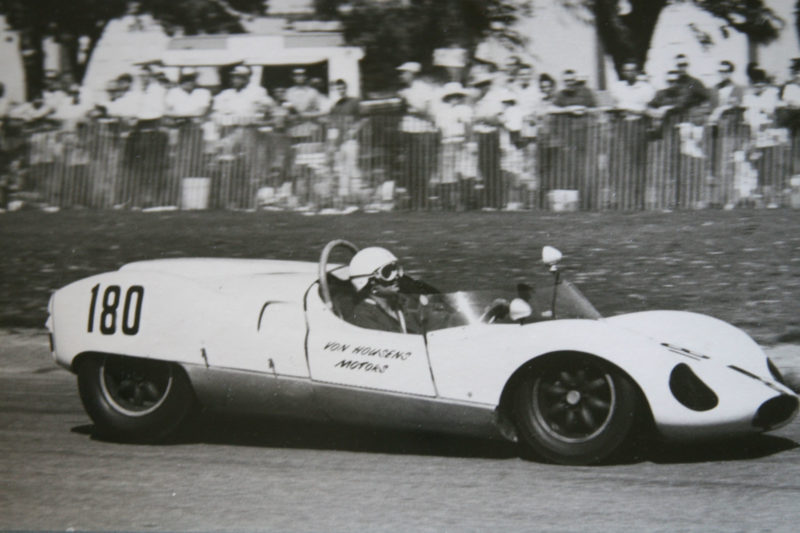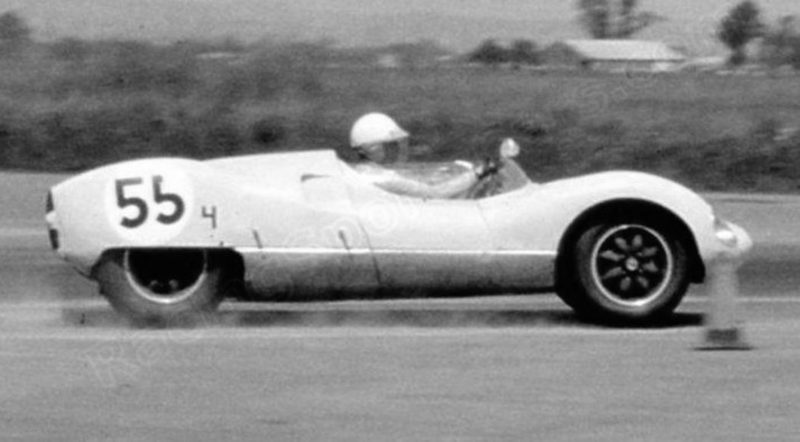Notes From The Archives: Cooper Monaco
November 30, 2017Cooper Monaco
Words by – Gary Horstkorta
In the early 1950’s and into the 1960’s, one of the dominant race car manufactures was the Cooper Car Company Ltd. of England. They built and developed several trendsetting race cars including the Formula 500, the Cooper Bristol, the Cooper Formula Jr., Formula II and Formula I models, all of which were very successful. Cooper was one of the first companies to recognize the advantage of a mid-engine design which resulted in winning several World Championships and revolutionized the Indianapolis 500.
Cooper was not solely focused on Formula Cars since there was a growing interest in sports cars in England, Europe and the U.S. Recognizing the need for such a car, the factory began design and development of a model with a mid-engine, two-seats and wrapped in a full aluminum body. The car was named the “Monaco” in honor of Cooper’s Maurice Trintignant’s victory at the Monaco Grand Prix in 1958.

Grinzewitsch at one point won four races in a row with his Monaco
The Monaco prototype was introduced to the press at the Cooper factory in November 1958 and was well received as another positive step in Coopers lineup of winning race cars. The Monaco incorporated a new space frame chassis but used a number of proven components from their formula cars including a traverse leaf spring rear suspension with wishbones up front.
The engine bay was designed to accept a variety of engines, including the Bristol engines which had been used in Cooper’s open-wheeled Formula racing cars. A Citroen-ERSA four-speed transaxle was mated to the 1.5- or 2.0-liter Climax FPF engines. A 12-gallon fuel tank was mounted outboard on the left side of the frame rails with the driver and battery located on the right-hand side. Of the eight Monaco Mk 1 models built in 1959, four went to drivers in the U.S. including Hap Sharp, later of Chaparral fame. The Cooper Monaco’s immediately dominated the racing circuit and eventually became one of the most successful mid-engined sports racing cars ever constructed.

The first Cooper Monaco on the West Coast raced by George Gfinzewitsch
The Cooper Monaco MKII Type 57 was raced during the 1960 season and was nearly identical to the MKI, except for a longer nose. Only two MKII models were built but they provided many podium finishes for their drivers.
In 1961, Cooper introduced the Monaco MKIII Type 61. These versions had straights tubes in the frame, replacing the curves and angle previously used; a wide radiator intake; improved suspension using coil springs and wishbones at the rear; a more aerodynamic body and to appeal to the American market, the new body was given tail fins. There were three Monaco Mark III’s built, one went to Roger Penske, another went to Texan Hap Sharp, and the third was sold to British privateer Peter Berry.
George Grinzewitsch was a local Sacramento area mechanic with a growing reputation around the local racing community. He and a partner, Carl Meyer, began a side business tuning customers race cars. In late 1958, Grinzewitsch left Oxford Motors and opened his own auto parts and repair shop with Meyer under the name of Von Housen. Meyer was also a Porsche racer so when he suddenly passed away, Grinzewitsch took over as driver and entered several SCCA events beginning in 1959.
His racing really took off when he purchased a Cooper Monaco in 1961 with which he competed in E Modified Class for the next three years at Reno, Cotati, Vaca Valley, Stockton, Laguna Seca and Oakland Jet Airport. In 1962, he purchased a new Mk IV Monaco from Cooper and with it finished the year as class champion.
After a very successful period racing Porsches, SFR racer Sam Weiss purchased Jack Brabham’s Cooper Monaco in early 1960. He won his first race in the car at Cotati; finished second overall in a national race at Vaca Valley and headed towards Laguna Seca as one of the race favorites. However during practice he collided with a slower car and succumbed to his injuries.

Sam Weiss at Cotati in 1960
In 1961, Bruce McLaren raced a Mk III at both the Los Angeles Times (Riverside) and Pacific Grand Prix events (Laguna Seca). The car was then sold to the Briggs Cunningham Team that swapped the original Climax FPF engine for a more powerful and lighter Buick V-8. This car was very successfully raced by Walt Hansgen in 1962 and 1963 before being purchased by San Francisco Buick Dealer, Bev Spencer.
The Spencer Monaco was only raced a few times in 1964 by drivers Bill Sherwood and Frank Crane before being sold to a private party. Years later and after a return trip to the UK where the car was restored and raced, it came back to the west coast and can now be seen on the track once again in vintage races.
Perhaps the most recognized Cooper Monacos were those raced by Carroll Shelby under the name of “King Cobra”. Modified, prepared and raced by top drivers including Ritchie Ginther, Dave McDonald, Parnelli Jones, Bob Bondurant, Ronnie Bucknum, Ed Leslie and Bob Holbert, While these cars were not the most reliable, they did have some good success and were the pre-cursor to one of the most exciting series in American raod racing, the Can Am.

